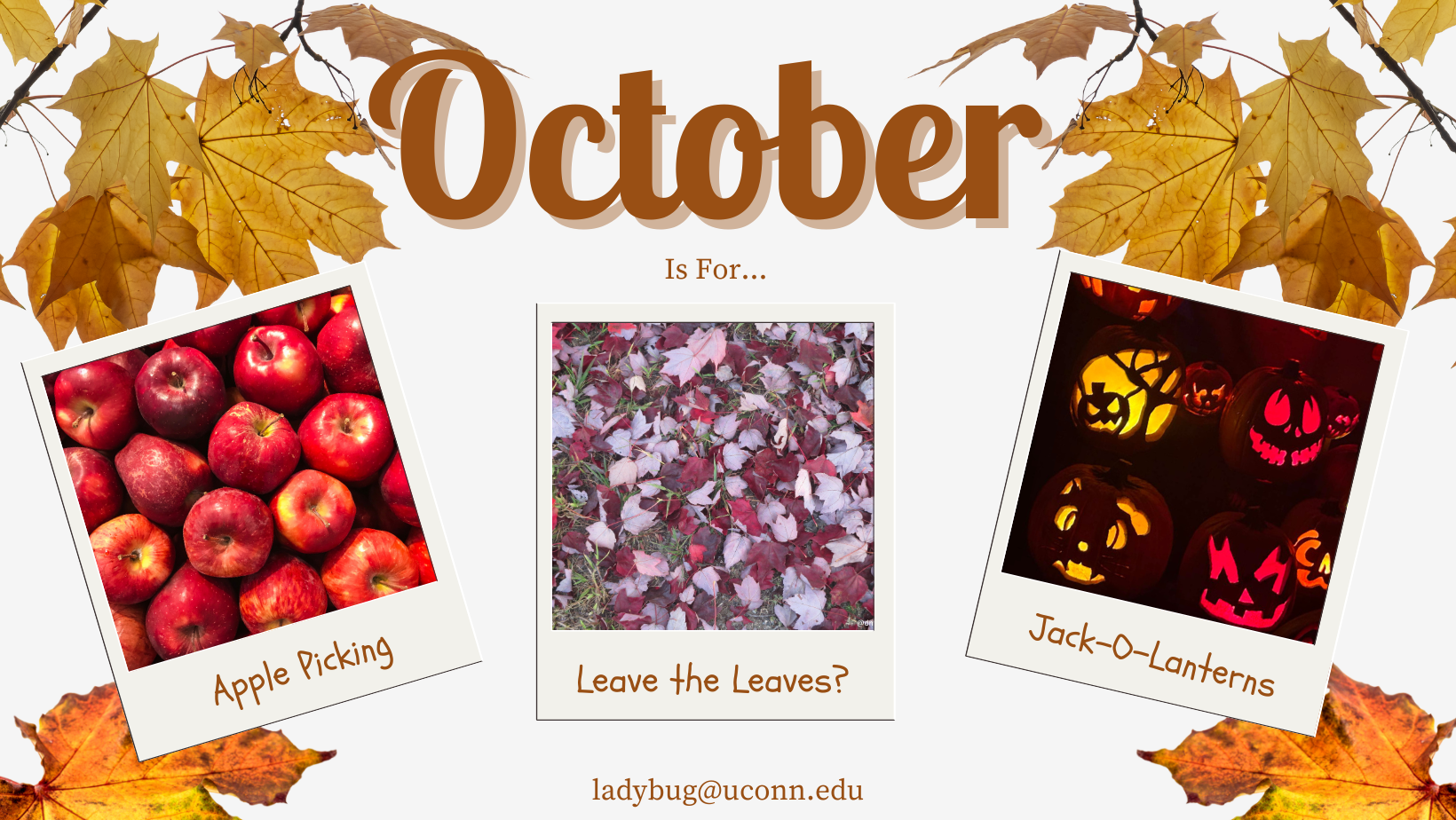
"October is the month for painted leaves.... As fruits and leaves and the day itself acquire a bright tint just before they fall, so the year near its setting. October is its sunset sky; November the later twilight."
-Henry David Thoreau "Autumnal Tints"
Going Apple Picking? These tips Are Just for You!
We're well into apple season here in Connecticut! With a few weeks left there is still time to get local apples and spend a day out with the family. UConn Fruit Specialist, Evan Lentz, from the Department of Plant Science & Landscape Architecture and UConn Extension, created a fantastic guide to help you find the perfect apple in the orchard!
Fun Facts:
- Apples come in early, middle, and late season varieties and many orchards will plant a large selection to give you plenty of time to get out and enjoy the experience!
- If you're considering growing apples at home, you will need at least two trees that are two different varieties and flower at the same time!
- To keep plants shorter for easier access to pick fruit, many apple trees are grafted. The upper portion, known as the scion, will give you. your desired type of fruit. The lower portion or root stock helps to determine the ultimate size of the tree. If suckers are allowed to develop, the apples that they produce could be entirely different!
Leave the Leaves: Let's Clear it Up!
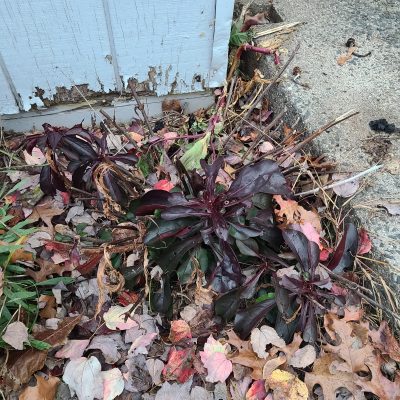
At this time of year, we see the same question in many forms:
- Should I clean my garden now?
- What is your opinion on "leave the leaves?"
- Is it better to clean up your garden in the spring or fall?
In essence, many gardeners seek guidance on what the best move to make is for cleaning up their gardens. In reality, the "best" decision can be different for different gardeners. These are the considerations we want to bring to mind:
Reasons to Leave Plant Debris/Leaf Litter
- Create a haven for insects and wildlife to overwinter in
- Provide a layer of organic matter/natural mulch in your garden beds
- You have more time for garden chores in the spring
- Plants with sensitive crowns may be better if left alone over the winter and managed in the spring
- Late blooming plants may still be in flower, or ornamental seed heads provide winter interest for your garden space
If You Do "Leave the Leaves"
- Mulch or shred leaves that will be left on the lawn to break down. This causes them to release nutrients into the soil at a faster pace and gives plants below a chance to find sunlight in the spring
- If unable to mulch your leaves, do not leave more than an inch or two of fully intact leaves. Thicker leaves will hold moisture and encourage disease or smother plant material below. They are also slower to break down and will need to be managed in the spring.
- Monitor for pests like jumping worms in leaf piles
- Monitor closely next growing season for signs of pest and disease and manage as soon as possible!
When you SHOULD clean up in the fall:
- Your garden has experienced fungal disease or significant pest damage
- Sanitation is a least-toxic method of control when it comes to managing garden pest problems.
- Many fungal spores and vegetable targeting insects will overwinter in the leaf pile alongside beneficial insects. If you have had a particularly damaging year, it may be in your best interest to remove that leaf litter and plant debris from your property.
- There are plants (perennials & ornamental grasses, in particular) along your foundation or in other areas of your property that could encourage undesired rodent damage?
- There's no doubt that rodents and small mammals need a home to overwinter in, but by removing possible shelters early in the fall, they will be encouraged to move elsewhere before the real cold sets in.
- Trees or shrubs on your property have experienced girdling or rodent damage before.
- Building up leaves to insulate plants can be great! However, if past trials of this have resulted in damage to the stems or trunks, you may want to reconsider this method.
Keep Your Jack-O-Lanterns Fresh!

Everyone loves to carve a pumpkin! Jack-O-Lanterns (which were originally carved from turnips), are a festive tradition that many of us enjoy!
And whether you're a skilled artist or a spirited novice, keeping your jack-o-lantern fresh for the season is important! Learn about the traditions of the Jack-O-Lantern and how to keep yours well preserved at the links below!
Plant Highlight: Monkshood
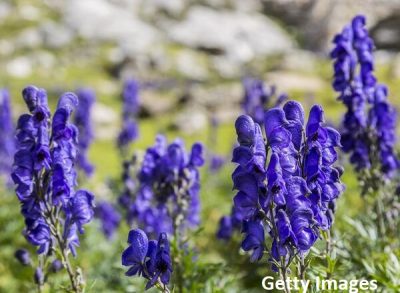
Monkshood, also called helmet flower and wolfsbane, is a deer-resistant non-aggressive, non-invasive non-native perennial that flowers in late summer-October here in Connecticut. The flowers are a striking deep, dark purple blue on upright spikes. It can used in cut flower arrangements. This is a good plant for shade conditions.
Wildlife Highlight: Birds Are On the Move!
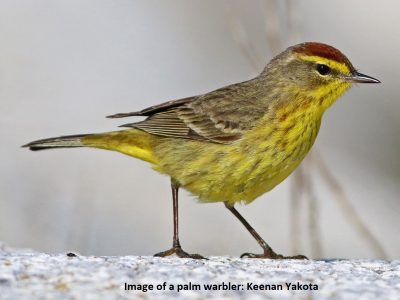
The Palm Warbler is a small warbler that forages primarily for insects. They will eat seeds and berries if available. These little birds migrate through our area in the spring and fall! Like a Phoebe, they are known for their characteristic tail wagging when they rest.
Late September is the beginning of migration to warmer climates of many species of birds that pass through Connecticut. Cornell University has many helpful fact sheets and other bird information tools that cover birds either breeding in or migrating through the North.
Vegetable Gardening Resources
During the growing season, UConn Extension publishes a regular pest alert. Additionally, the New England Vegetable Management Guide offers a lot of information about specific vegetable crops.
While the target audience for these publications is usually commercial growers, home gardeners can learn a lot from these materials including identification and management of common pests in your veggie gardens!
If you ever need confirmation on an ID or have additional questions about what you read in these reports, please do not hesitate to reach out to us at the Home & Garden Education Center! We're happy to help your gardens thrive.
UConn Fruit Update
The UConn Fruit Program publishes a fruit update, very similar to the IPM Vegetable Pest Alert. If you keep fruit trees, this may be a valuable resource for you! If you ever need help understanding how to apply these principles to your own home garden, let us know!
Upcoming Events and Things to Do
- See the Calendar of Fairs in Connecticut - There's still a few fairs left this season!
- It's Apple Season! Visit a pick-your-own orchard, or find your favorite apple flavored treats starting this month!
- Interested in "leaf peeping?" Use this Foliage Finder guide to track fall color in the state!
- Explore a Corn Maze!
- Visit the CT Garlic & Harvest Festival Oct 12 & 13 in Bethlehem, CT
- Roger Williams Zoo is hosting their Annual Jack-O-Lantern Spectacular Sept 27-Nov 2 in Providence, RI
- There's still plenty of time to complete the Sky's the Limit Hiking Challenge!
Educational Opportunities & Workshops
- Autumn Bird Walk - October 5th, Derby, CT
- Peoples State Forest 100th Anniversary Celebration, October 6th, Barkhamsted, CT
- Native Plant Seed Collecting Workshop, October 12, New London, CT
- SALT Conference, November 2nd, New London, CT
- CT NOFA Farm & Garden Conference, November 2nd, New Haven, CT
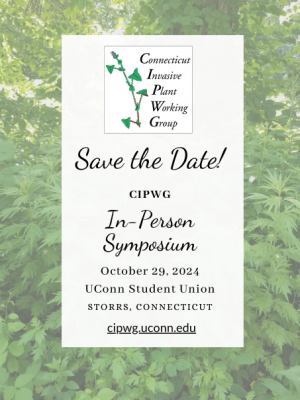
CT Invasive Plant Working Group
In-Person Symposium
October 29th, 2024
UConn Student Union
Storrs, CT
October Gardening Tips
- October is still a great time to have your soil tested. Beat the spring rush and have your soil ready to go well before the growing season begins!
- Keep collecting matured seeds. Dry them out and place them in labeled brown coin envelopes within an air tight container, and store in a cool place.
- Mulch perennial beds using a loose organic material such as bark chips or leaves to keep down weeds, preserve moisture and give roots a longer time to grow before the soil freezes.
- Sketch out where you planted various vegetables in your garden back in the spring. This will come in handy next spring so when you plant, you can rotate your crops and help prevent disease. Add notes of any issues you saw this season so you don't forget to scout for them next year!
- Plant garlic from October 1st to November 15th. Place each clove pointed-side up at a depth of 2-4” about 6” apart.
- Use a mulching blade to finely chop fallen leaves of healthy trees and let them decompose on the lawn. Completely remove and dispose of any leaves that have shown signs of disease.
- Move the houseplants to their indoor locations when outdoor temperatures are consistently 50 degrees Fahrenheit. Acclamate them by moving them into an unheated mud room or garage for a couple of days before moving them into a heated house.
- Renovate the lawn by thatching or aerating if needed. All seeding should be done before Oct. 4th for best results.
- Watch for frost warnings and cover tender plants and pumpkins.
- Limit herbaceous plant material located a few feet away from the house to eliminate hiding places for insects and mice, which could wind up indoors as temperatures plummet.
- If rain is lacking, continue to thoroughly water trees, shrubs, planting beds, and lawn areas. It is especially important to keep newly planted evergreens watered
This Month’s Newsletter Contributors:
Pamm Cooper, Dr. Nick Goltz, Dawn Pettinelli, Marie Woodward, Heather Zidack

